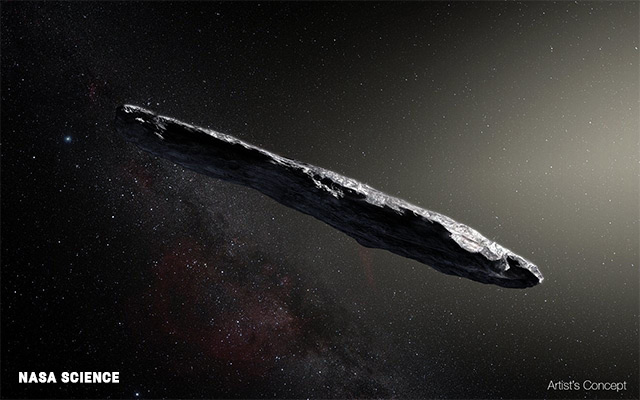Asteroid that killed dinosaurs also caused GIANT tsunamis
07/16/2021 / By Ramon Tomey

Scientists recently discovered that an asteroid that hit the Earth and killed the dinosaurs millions of years also sent mile-high tsunamis crashing into North America. They found proof of this event through fossilized “mega-ripples” buried within sediments in the central Louisiana area. The finding contributes to the larger search for evidence of the asteroid’s impact – that caused the extinction of the dinosaurs.
Scientists at the University of Louisiana at Lafayette (UL) found these mega-ripples by means of seismic imaging carried out by a petroleum firm. They looked at soil 5,000 feet below the surface of central Louisiana and found the 50-feet-high ripples spaced half a mile apart. According to the scientists, these ripples were the imprint of the tidal waves that spread out from the asteroid’s impact crater.
Furthermore, the UL scientists said the orientation of the ripples was consistent with how they would expect the tidal wave to hit after the asteroid impact. When a line was drawn from the crest of the ripples, it went directly to the direction of the Chicxulub crater underneath Mexico’s Yucatan Peninsula. The crater was located about 1,000 miles from the area the scientists surveyed.
The UL scientists said the intensity of the mile-high tsunamis would have been so intense that it triggered earthquakes more powerful than magnitude 11 on the Richter scale once they hit the shore. They would have continued for days, reflecting back from the impact multiple times until finally dissipating, the scientists added.
According to the UL researchers, the tsunamis generated by the asteroid’s impact disturbed the seafloor and hit waters 200 feet deep as they neared the shore. UL scientist Gary Kinsland said: “The water was so deep that once the tsunami had quit, regular storm waves couldn’t disturb what was down there.”
Kinsland’s explanation meant that the area was perfect for preserving the ripples that would eventually have been buried in sediment. A layer of air-fall debris linked to the asteroid crater coated the imprint of the ripples generated 66 million years ago – which the researchers would later find.
The asteroid’s impact was felt around the world
The asteroid that created the Chicxulub crater did not only send tsunamis thousands of miles from where it fell. It also caused wildfires 1,000 miles away and created dust plumes that encircled the world. While the impact itself might have caused devastation for thousands of miles around it, atmospheric changes spread the asteroid’s effects throughout the globe.
Furthermore, the asteroid’s impact killed millions of creatures and wiped out many species in its aftermath. Sea creatures were sent onto land and land animals were sent onto the sea. Most importantly, the asteroid ended the Mesozoic era and caused the extinction of the dinosaurs.
Kinsland and his colleagues expressed hope that other post-collision tsunami ripples will be unearthed – piecing together the puzzle of the extinction event more than 60 million years ago. (Related: Asteroid that wiped out dinosaurs may have created the Amazon rainforest, study suggests.)
But prior to the discovery by Kinsland and his colleagues, a team of paleontologists discovered a site further away from the Chicxulub crater that showed how the asteroid fundamentally changed the Earth. The Tanis site in North Dakota formed after tidal waves hit a river valley. University of Kansas paleontology graduate student Robert DePalma and his colleagues found a jumbled mess of fossilized fishes and trees in the site. (Related: Construction site turned dinosaur dig: Workers unearth 68-million-year-old Triceratops fossil.)
According to DePalma’s team, the Tanis deposit measuring 1.3 meters in thickness formed in just a few hours after the asteroid fell. The formation time was even estimated to have occurred earlier – about 13 minutes following impact. Fish fossils were normally deposited horizontally, but not the ones found in Tanis. Tree trunks and fish carcasses were fossilized in near-vertical orientations, which suggested that they were caught in a large volume of mud and sand instantaneously dumped.
Glassy spherules dotted the mud and sand preserving the fossils, with many being caught in the gills of sturgeons and other fishes. Isotopic dating found the spherules to be from 65.8 million years ago. These presumably formed from droplets of molten rock launched into the atmosphere at the Chicxulub crater site, cooling down and solidifying as they went back to Earth.
Visit Discoveries.news to read more stories about the extinction event that killed the dinosaurs.
Sources include:
Submit a correction >>
Tagged Under:
asteroid, breakthrough, Chicxulub crater, dinosaur extinction, discoveries, environment, Extinction Event, mega ripples, Mesozoic Era, North Dakota, real history, research, Tanis site, tsunami
This article may contain statements that reflect the opinion of the author
RECENT NEWS & ARTICLES
COPYRIGHT © 2023 Comets.news
All content posted on this site is protected under Free Speech. Comets.news is not responsible for content written by contributing authors. The information on this site is provided for educational and entertainment purposes only. It is not intended as a substitute for professional advice of any kind. Comets.news assumes no responsibility for the use or misuse of this material. All trademarks, registered trademarks and service marks mentioned on this site are the property of their respective owners.














